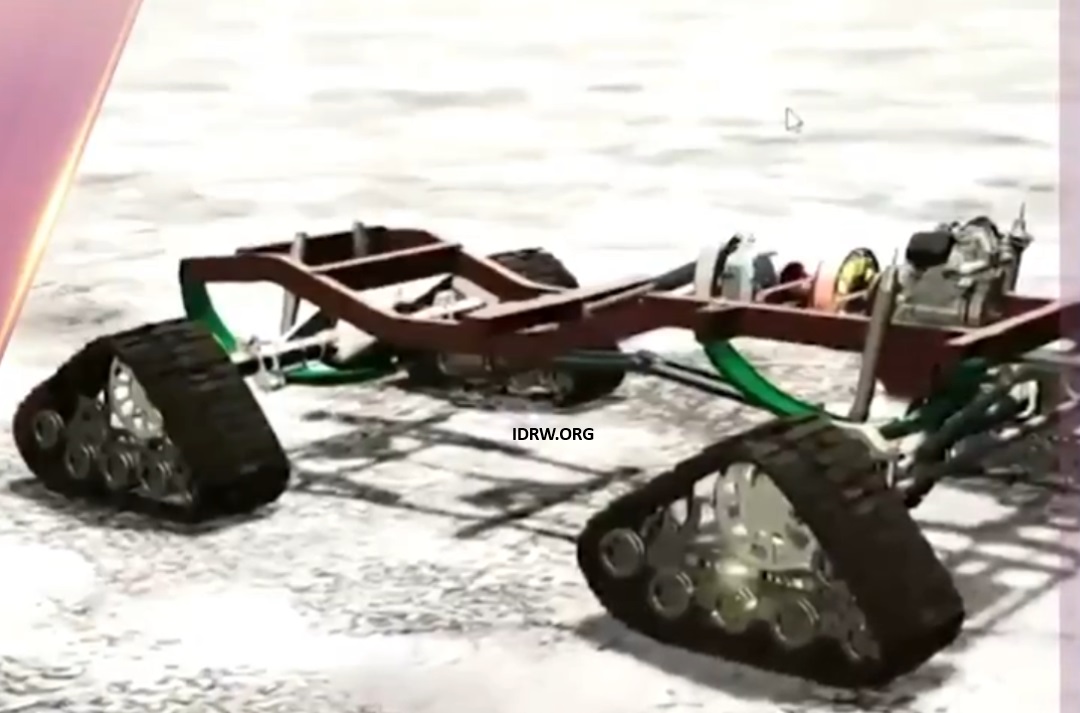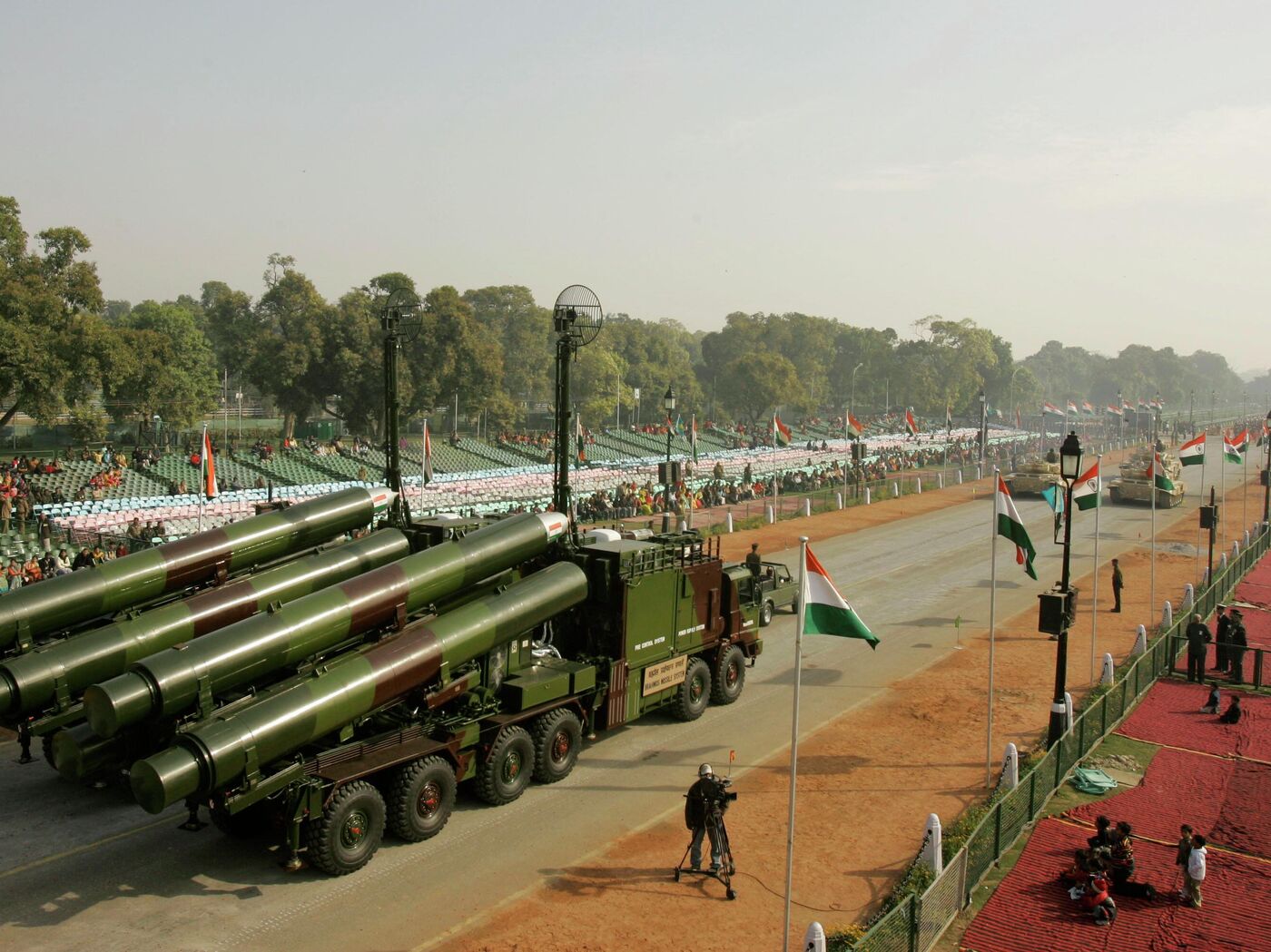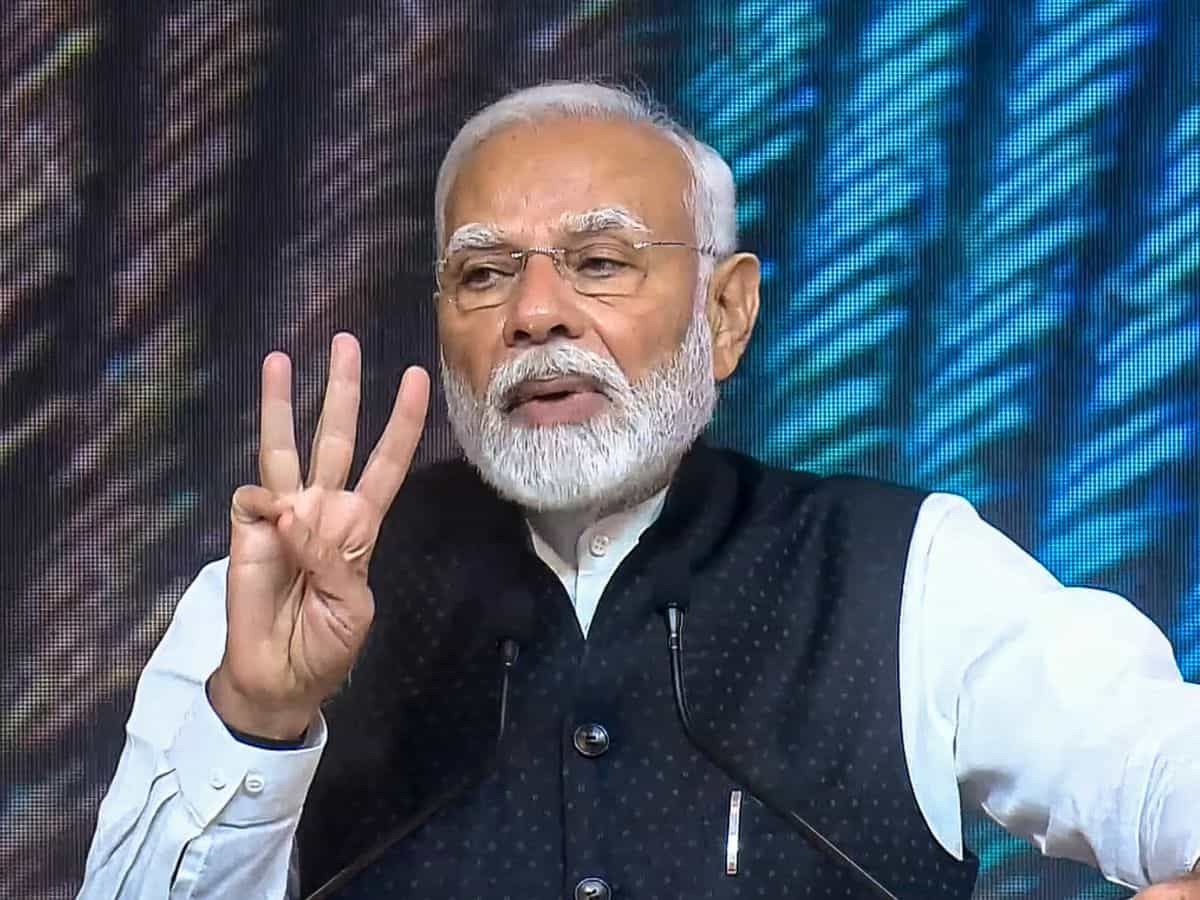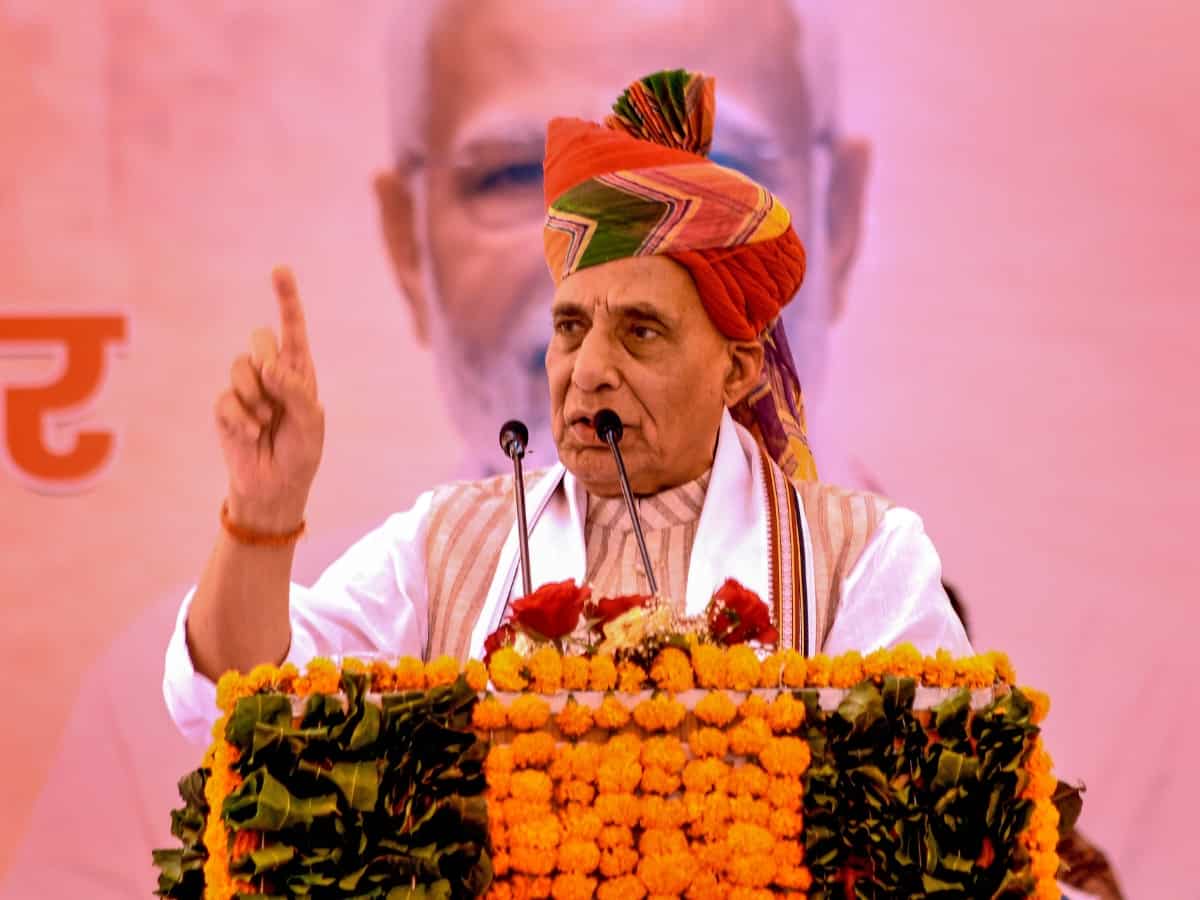SOURCE: IDRW.ORG.

On February 12th, 2014, a crucial moment in India’s defense history unfolded when the Ministry of Defence (MoD) was jolted from its passive stance by the increasing presence of China’s nuclear-powered submarines in the Indian Ocean Region (IOR). This was the day India realized the growing threat in its own backyard, as the Chinese People’s Liberation Army Navy (PLA Navy) deployed Shang-class (Type 093) nuclear-powered attack submarines (SSNs) in the IOR for the first time. This deployment was a clear demonstration of China’s intent to project its naval power in the region, marking the start of a new era of maritime strategic competition between India and China.
This move by China highlighted India’s vulnerability in the IOR, spurring the Indian MoD to take decisive action. The Chinese SSN presence effectively underscored the strategic imbalance in the region and prompted India to expedite the development of its own nuclear-powered attack submarines.
Continue readingSOURCE: IDRW.ORG.

The Indian Ministry of Defence (MoD) has issued a call to Indian industries, particularly MSMEs and startups, to develop Automatic Defect Recognition (ADR) software for weld radiography inspection, specifically for naval applications. This initiative is crucial as India’s defense forces are heavily involved in the fabrication of steel hulls for various naval vessels, and ensuring the integrity of these welds is critical for safety and performance.
Weld integrity is a vital aspect of naval construction, particularly in the fabrication of steel hulls that form the backbone of ships and submarines. The Indian Navy relies on nondestructive testing (NDT) methods to inspect these weldments, with Digital Radiographic Testing (DRT) being a widely adopted technique. DRT includes digitized film-based and computed radiography (CR)-based approaches that capture high-resolution images of welds for evaluation.
Continue readingSOURCE: AFI

Hindustan Aeronautics Limited (HAL) is pushing forward with the production of the Tejas Mk1A despite delays in the supply of F-404 engines from General Electric (GE). Currently, HAL has completed 14 airframes for the Mk1A, prepared for final assembly as soon as the engine supply resumes. By maintaining the production pace of airframes, HAL aims to avoid delays in delivering these jets to the Indian Air Force (IAF) as per the contractual schedule.
In a bid to meet its commitment to deliver 83 Tejas Mk1A fighters by 2028-29, HAL has ramped up production efforts. This proactive stance allows the company to have a significant backlog of completed airframes, which can be fitted with engines and avionics systems rapidly once the supply chain issues resolve. HAL also plans to use older engines to test these airframes, ensuring operational readiness and quality standards without holding back production.
Continue readingSOURCE: AFI

Tata Advanced Systems Limited (TASL) has made a significant impression at the Marrakech Air Show 2024 by showcasing its WhAP 8×8 Infantry Combat Vehicle/Armored Personnel Carrier (APC). Held at the Marrakech Royal Moroccan Air Force Base from October 30 to November 2, the show highlights the Royal Moroccan Army’s recent interest and commitment to advanced armored vehicle capabilities. Notably, the Moroccan Army has placed an order for 150 units of the WhAP 8×8, which will be manufactured locally, marking a pivotal step for Morocco in establishing a domestic defense production ecosystem aimed at both local defense and export markets.
The WhAP (Wheeled Armored Platform) 8×8 is a modular armored vehicle platform developed by TASL in collaboration with India’s Defence Research and Development Organisation (DRDO). Known for its versatility, the WhAP 8×8 serves as both an Infantry Combat Vehicle (ICV) and an APC, meeting a range of operational needs. This platform offers advanced protection systems, superior off-road mobility, and modularity, making it ideal for a wide range of combat and support roles. Its adaptability allows integration of various weapon systems and configurations, including a remote weapon station, a 30mm cannon, anti-tank guided missiles, and provisions for carrying a crew of up to 12 personnel.
Continue readingSOURCE: AFI

The Indian Air Force (IAF), which previously ordered five squadrons of the Russian S-400 Triumf air defense system, has clarified that it has no current plans to locally manufacture these systems. Instead, the IAF has shifted its focus to an indigenous initiative, Project Kusha, which aims to develop 10 squadrons of advanced long-range interceptor missiles. This strategic pivot comes amid delayed deliveries of the remaining two S-400 squadrons from Russia, as the ongoing conflict in Ukraine continues to disrupt global defense supply chains.
India’s acquisition of the S-400 system from Russia was considered a significant milestone in strengthening its air defense capabilities. The S-400 is one of the most advanced long-range air defense systems in the world, capable of intercepting ballistic missiles, fighter jets, and other aerial threats at distances of up to 400 kilometers. Despite receiving three out of the five ordered squadrons, Russia’s delivery of the remaining two squadrons has been delayed due to the ongoing war in Ukraine, which has strained Russia’s defense production and supply capabilities.
Continue readingSOURCE: AFI

Under the “Dare to Dream 4.0” initiative of DRDO (Defence Research and Development Organisation), X-Pect Innovations is developing a groundbreaking Regenerative Clutch System (RCS) that captures wasted engine energy and repurposes it to power cutting-edge defense technologies. This innovative project aims to transform the way energy is utilized in defense applications, promising increased efficiency, sustainability, and operational capability for military platforms.
Modern engines, especially in military vehicles, produce significant amounts of energy during peak traffic hours or high-stress operations. However, much of this energy goes to waste due to inefficiencies in the system, leading to lost power that could otherwise be harnessed for mission-critical functions. X-Pect Innovations is tackling this problem by developing the Regenerative Clutch System, which can capture and store this excess energy for future use. In doing so, the system acts as a standalone generator, offering an energy solution that reduces waste and improves overall energy efficiency in defense platforms.
Continue readingSOURCE: AFI

In a significant achievement for indigenous defense technology, NewSpace Research and Technologies (NRT) has successfully concluded a pioneering project under the Technology Development Fund (TDF) of the Defence Research and Development Organisation (DRDO), Ministry of Defence, Government of India. The project, titled “Autonomous Drone as First Responder for Search & Report Operations in Indoor Environment,” marks a major milestone in India’s Aatmanirbhar Bharat mission, advancing domestic expertise in cutting-edge autonomous drone systems.
The autonomous drone technology was formally handed over to the DRDO in a ceremony attended by Hon. Raksha Mantri, where its capabilities were showcased for deployment in various mission scenarios by end users in the defense sector.
Continue readingSOURCE: UNI

Matangi has successfully completed the second leg of the Autonomous mode transit from Karwar to Kochi covering about 590 km (320 nm) passage at night. Matangi had successfully completed the first leg of the Autonomous mode transit from Mumbai to Karwar covering about 600 km (350 nm) passage at night.
Indian Navy and SDE jointly celebrate this accomplishment. 390 km more to go to Tuticorin.
Continue readingSOURCE: UNI

Pakistan has expressed its concern over the “generous” supply of conventional weapons to “one state” in South Asia an obvious reference to India, saying it was fueling instability and jeopardizing the delicate balance in the tension-ridden region.
Gul Qaiser, a counsellor at Pakistan’s UN mission, raised the issue during a United Nations General Assembly debate on conventional weapons, urging the international community to consider the destabilising impact of arms transfers in volatile regions.
Continue readingSOURCE: PTI

Prime Minister Narendra Modi on Thursday said some forces in and outside India are trying to destabilise the country and portray a negative image of the nation in the world, underscoring the need to “identify urban Naxals and unmask them”.
He was addressing a gathering near the iconic Statue of Unity at Ekta Nagar in Gujarat’s Narmada district after paying floral tributes to Sardar Vallabhbhai Patel on the birth anniversary of India’s first home minister.
Continue readingSOURCE: PTI

Defence Minister Rajnath Singh on Wednesday said India wants to continue the peace process with China through consensus as per the ideals of former PM Atal Behari Vajpayee. Speaking to the personnel of the Indian Army at the headquarters of Gajraj Corps in Tezpur on the occasion of ‘Bada Khana’, Singh lauded the efforts of the soldiers in the peace process.
“We want to continue this peace process through consensus. Our former PM Atal Behari Vajpayee had said we can change friends, but not neighbours. We want to maintain good relations with our neighbours and that’s a clear policy of India,” he said.
Continue readingSOURCE: ANI
)
In a significant diplomatic engagement, National Security Advisor Jake Sullivan held a phone conversation with Indian National Security Advisor Ajit Doval, discussing critical regional security developments and emphasising the necessity for ongoing efforts to bolster stability in the Indo-Pacific region and beyond.
The dialogue underscores the growing strategic partnership between India and the United States, marked by shared democratic values and mutual interests, the White House stated in an official press release.
Continue readingSOURCE: ANI

Prime Minister Narendra Modi on Thursday celebrated Diwali with the Border Security Force (BSF), Army, Navy, and Air Force personnel at Lakki Nala in Sir Creek area in Kachchh, Gujarat. The area PM is spending time in is an extremely inhospitable place, due to the very hot days and very cold nights. The terrain is also challenging. Prime Minister Modi has been spending Diwali with the troops since he took over in 2014. PM Modi also extended Diwali greetings to the people earlier today. “Many happy wishes to the countrymen on Deepawali.
On this divine festival of lights, I wish everyone a healthy, happy and prosperous life. May everyone prosper with the blessings of Maa Lakshmi and Lord Shri Ganesha,” PM Modi said on X. Moreover, the PM honoured Sardar Vallabhbhai Patel at the Statue of Unity in Kevadia, Gujarat on the occasion of National Unity Day.
Continue readingSOURCE: ANI

Jawans of the Indian Army’s Romeo Force celebrated Diwali away from their homes at an altitude of 8,000 feet in the hilly regions of the Pir Panjal Range on Wednesday. The jawans of the force sang bhajans, distributed sweets, and lighted sparklers as they celebrated the festival of lights.
Away from their hometowns in the service of the nation, Army jawans also marked Diwali celebrations at the Line of Control in Jammu and Kashmir. They held Diwali pooja, danced, sang songs, and enjoyed firecrackers to mark the festival. A jawan told ANI, “We are celebrating Diwali with our other family–the army jawans.
Continue readingSOURCE: PTI
)
Troops of India and China exchanged sweets at several border points along the Line of Actual Control (LAC) on the occasion of Diwali on Thursday. The traditional practice was observed a day after both countries completed troop disengagement at the two friction points at Demchok and Depsang Plains in eastern Ladakh, bringing a fresh thaw in the Sino-Indian ties.
“Sweets exchange between members of the troops of India and China took place at several border points along the LAC on the occasion of Diwali,” an Army source told PTI earlier in the day.
Continue reading